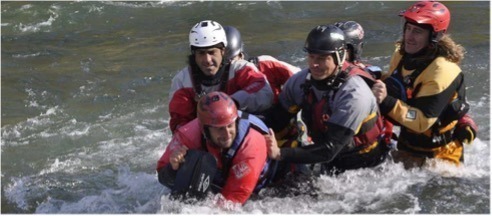Welcome to the IRF family Zach, Aaron, Dustin, Emily, Ellie, Michael, Brodie, Thomas, Santiago, Dave, Will, Sarah, Heidi!!!
 I had been in email contact with Zachary from Northwest Rafting Company in Oregon USA for over 2 years trying to find the time for Zach to attend an instructor workshop. His drive and enthusiasm were really impressive. We both finally decided that Zach & his crew at Northwest Rafting Company should host their own IRF workshop in the states.
I had been in email contact with Zachary from Northwest Rafting Company in Oregon USA for over 2 years trying to find the time for Zach to attend an instructor workshop. His drive and enthusiasm were really impressive. We both finally decided that Zach & his crew at Northwest Rafting Company should host their own IRF workshop in the states.
Considering that the rafting industry in the USA is probably the largest in the world the IRF is massively under-represented in the USA, but this is changing fast.
With no formal national rafting qualifications or independent commercial guide courses on offer in the USA, Zach & his fellow raft guides were curious to see how the IRF GTE system works. Most of all they wanted their skills & training to be put to the test as none of them had ever been through a formal skills assessment. I was impressed as most of the candidates had between 10-20 years commercial rafting experience. Most guides with this much experience are reluctant to take a formal assessment run by a foreign outsider they had never met.
 We collected a group of Instructor, Trip Leader & Guide candidates from around the USA and the world. With people travelling from Ecuador and Canada to join the workshop.
We collected a group of Instructor, Trip Leader & Guide candidates from around the USA and the world. With people travelling from Ecuador and Canada to join the workshop.
Zach housed us all in an amazing house in the town of Hood River on the Oregon and Washington boarder. A stone throws away from the Hood River & White Salmon River.
I had a group of 13 students, all of which were bursting with energy and enthusiasm. Out of this group there were 6 Instructor candidates, 5 TL candidates and 2 Guide candidates. This was going to be an intense week!
In the months leading up to the workshop I started to collect the relevant experience documents and First Aid certificates from the students. I noticed a few key indicators straight away that made me realize this workshop was going to be a special one. The points were:
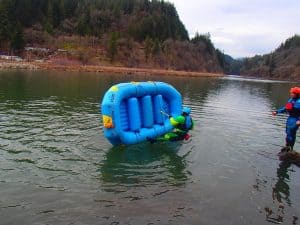 All the candidates had the relevant valid First Aid certificates.
All the candidates had the relevant valid First Aid certificates.- All the candidates had up to date river log books showing their commercial rafting experience.
- The candidates were asking some really intelligent questions.
This meant I could save valuable time not chasing candidates for paperwork once the course was over. The candidates wanted to be on the workshop & were primed to start.
Day 1 (Getting to know each other)
Imagine a stranger walking into your place of work and making observations on how you work. I imagine this would make most people nervous. When I am running a workshop Day 1 is always a key day. The candidates need to understand how I work and what my expectations of them are. Likewise, I need to get to personally understand each candidate so that I can adapt a teaching style that will maximise their performance.

The first morning was spent with the familiar introductions. We then delved straight into a few key power point presentations explaining the role of the IRF and the structure of the Guide Training & Education System (GTE).
The candidates were made aware of the assessment criteria and what was needed to pass.
One of the key messages that I had to get across to the students was that the week would be spent looking at current best global practice. The students were curious about the rafting world outside of the USA.
Once we were changed, we spent the first 20 minutes talking about guide PPE standards. One of the major learning points was the application of the clean principle. Throughout Europe the clean principle teaches that:
“On no part of the guides personal equipment or personal rescue equipment should there be any loops big enough to create a non-releasing snag hazard”

The clean principle is not commonly taught or known about in the USA.
Once we had talked about our personal equipment and raft set up, we started on assessing pre-departure safety demonstrations. As all of the guides on the workshop spoke either really good English or had English as a first language. The safety talks were at a good standard, but I wanted them to be better. The key points I wanted to instil into the candidates were.
- The structure of the safety demonstration:
I demonstrated this by using the cake theory. Each area of the demonstration was paired to the ingredient of a cake when baking. For example: the paddle = sugar, which must be one of the first ingredients; and flipping = icing, which is one of the last ingredients. If the ingredients are put in at the wrong point you will just end up with a lumpy mess that nobody will appreciate or understand.
 Actions speak louder than words:
Actions speak louder than words:
I needed the students to realize that not all of their customer will always understand English as a first language and that a demonstration can be more powerful than simple verbal instructions. I encouraged the students that for every set of verbal instructions that were given they needed to be backed up by a none verbal demonstration. This would help with the power of the safety demonstration and getting the message across.
A general agreement of river signals and emergency protocol was agreed on. Then we headed on to the water to tackle the White Salmon River in Washington.
Originally my plan was to warm the students up slowly, but I could see we were all really starting to warm to each other, and the skill level was high. I decided to play a 4-boat game of follow the leader. My boat to the lead and the instructions were simple: follow me – if I eddy out you eddy out, if I ferry glide you ferry glide. Not only does this exercise let me assess the river running skills of the guides I also got to see their spacing and communication skills.

We decided to end the day with the IRF flip drill test. I wanted to get the test done on the first day when the students were still full of energy, plus, if any weaknesses were identified, we had the rest of the week to work on them. I was quietly surprised when all the students passed first time with times of less than 1:30 mins out of the 2:00 mins allocated.
The first day had been a massively productive day.
Day 2 (Time to ramp it up!)
Today we headed to the Hood River. We had a lot to get through. The list on my waterproof note book had the following points.
- Continue raft safety demonstrations.
- Safety craft (raft & kayak) demonstrations
- CLAP as a river running strategy
- The role of the safety crafter
- Continue guide assessments
- Swim test
- Throwbag Test
- Safety kayak assessments.

Not only did I want to continue with the raft guide assessments, I wanted to start to assess the physical fitness of the students. I also wanted to start to look at the role of the safety crafter. On this workshop we had guides who wanted to be assessed for the safety craft awards for both kayak and oar-based rafts, which added another dimension to the workshop.
Between us we discussed the finer points and tactics of the role of the Safety crafter. The main agreed duties of the safety crafter are:
- To provide a rescue craft specific safety demonstration for the customers on commercial trips.
- To provide ultimate downstream safety whilst working on a commercial raft trip.
- To act as a personal swim coach / rescue platform for any customers who end up swimming.

I used the last 10 minutes of the lunch break to scout a location for the swim and throwbag test. I needed a site that was going to provide me with a demanding but safe environment for the tests. As we were rafting in early April the water temperature was still cold, so I was happy that all the students were wearing drysuits . The swim needed to include swimming through some river features, ferry gliding and making eddies. I made the students swim twice, once without a paddle and once with a paddle, with a run back up the bank between swims.
We then discussed the points of the IRF standard throwbag test. One of the instructor candidates, Will, gave a good example. I explained that not only the throw was being assessed, but also the students must also focus on the other key assessment areas:
- Throwing location:
- Use of an appropriate belay (static or dynamic).
- Rope management skills.
- Swimmer communication.
The last part of the afternoon was spent assessing safety kayak skills. The session looked into subjects such as:
- Safety kayaker positioning.
- Communication with both fellow guides and swimmers.
- The various rescue options available to a safety kayaker.
Day 3

Day 3 is affectionately know as wobbly Wednesday this is the day where fatigue slowly starts to show. I arranged to run a shorter section of river that allowed us to finish the guide assessments off so that we could spend the afternoon running the IRF ropework test. As I had so many Trip Leader and Instructor candidates, I wanted to run an in-depth rope work session as I have found that some people find understanding and teaching ropework a daunting task.
The first part of the session was used to create a foundation of understanding. Basic knot construction and technical equipment standards were discussed. The group then moved on to anchor construction. Once anchors and knots were turned into muscle memory we then started to look at how to calculate and build various mechanical advantage systems. The following systems were built:
- Internal simple 2:1
- Internal simple 3:1
- internal simple 5:1
- Internal Compound 9:1
- Improvised external compound 4:1
We were rapidly starting to loose daylight which made the IRF ropework test in the dark even more challenging. We eventually had to call it a day and run the second half of the assessment on day 4.
Days 4, 5 & 6
On many of the workshops I have worked on many of the guides say that the Trip Leader scenarios are where the most enjoyment and learning takes place. If this is true, the 3 days were going to be fun as we had 11 Trip Leader assessments to run in 3 days. By now the students were all operating as a team. I knew that I had to set challenging scenarios.

Before we headed onto the water we looked at the role of the Trip Leader on a commercial raft trip. We discussed many of the finer points of trip management. We all agreed by the end of the discussion that the role of the Trip Leader is:
“To take overall responsibility for the running of a commercial raft trip.”
At this point I also wanted to start to involve the Instructor candidates when setting up the scenarios. And some of the candidates had commercial experience on the rapids we were running the assessments on. After a few scenarios we were starting to notice a pattern forming in the way that the scenarios were managed:
- Send the safety kayaker downstream to establish a downstream safety net.
- Make a head count.
- Delegate various jobs and roles to the other guides within the trip.
- Clean up, get all of the swimmers and equipment back to the same eddy to allow the trip to re group.
- Debrief the customers and continue.
 Day 6 allowed us to run the lesser-rafted farmlands section of the White Salmon River. The farmland section runs through a steep sided box canyon with plenty of class 4 drops and slides. To increase the fun factor we decided to run the canyon R2 style. Zach, our host, was the last candidate to receive his TL scenario so we decided to make his scenario extra spicy for him, and he led by example by delivering a perfect performance with some tricky customers to mange.
Day 6 allowed us to run the lesser-rafted farmlands section of the White Salmon River. The farmland section runs through a steep sided box canyon with plenty of class 4 drops and slides. To increase the fun factor we decided to run the canyon R2 style. Zach, our host, was the last candidate to receive his TL scenario so we decided to make his scenario extra spicy for him, and he led by example by delivering a perfect performance with some tricky customers to mange.
Day 7
The last day consisted of the final Instructor assessments. Each Instructor candidate had to deliver 2 land based theoretical sessions. The candidates had spend the night putting the final touches on their presentations. Each presentation had to meet the standard IRF scoring criteria. The energy and creativeness that was on show was a pleasure to watch. The day ended with some final debriefs.
So welcome to the #RiverFamily.
It was emotional.
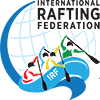
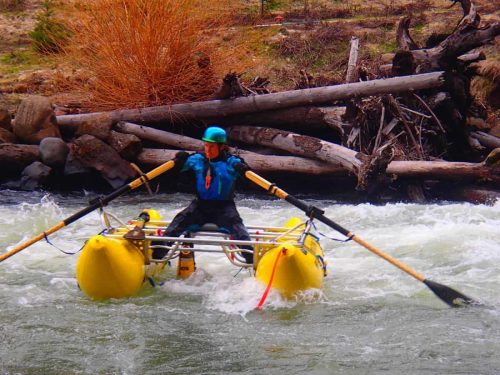
 Actions speak louder than words:
Actions speak louder than words: